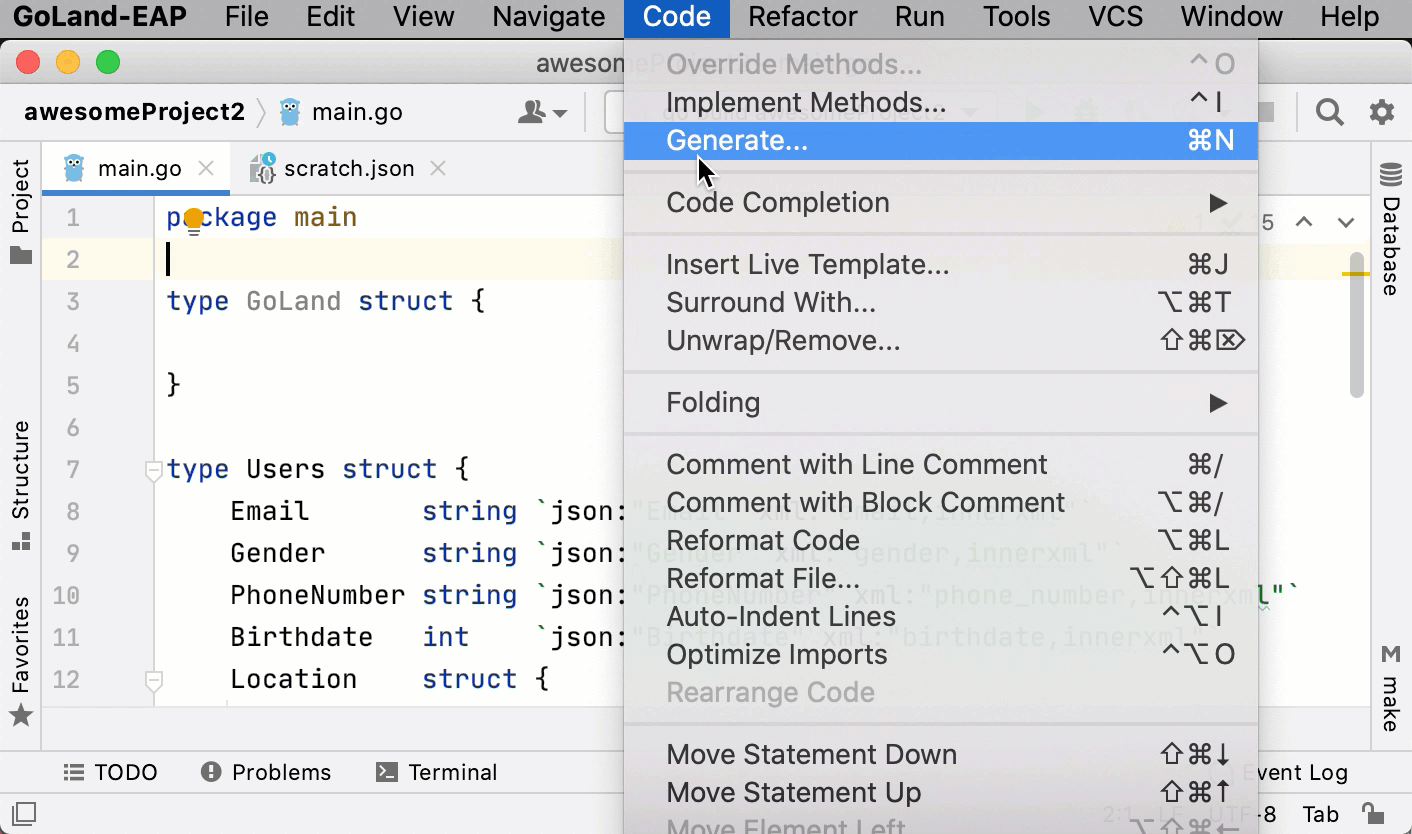Working with JSON
JavaScript Object Notation (JSON) is a textual format in which you can represent, store, and transfer structural data.
In Go, map and struct data types provide the closest JSON representation as they can store data in a key:value format.
When you paste JSON in GoLand, the IDE suggests converting it to the struct type. All the necessary struct field tags are generated and added automatically.
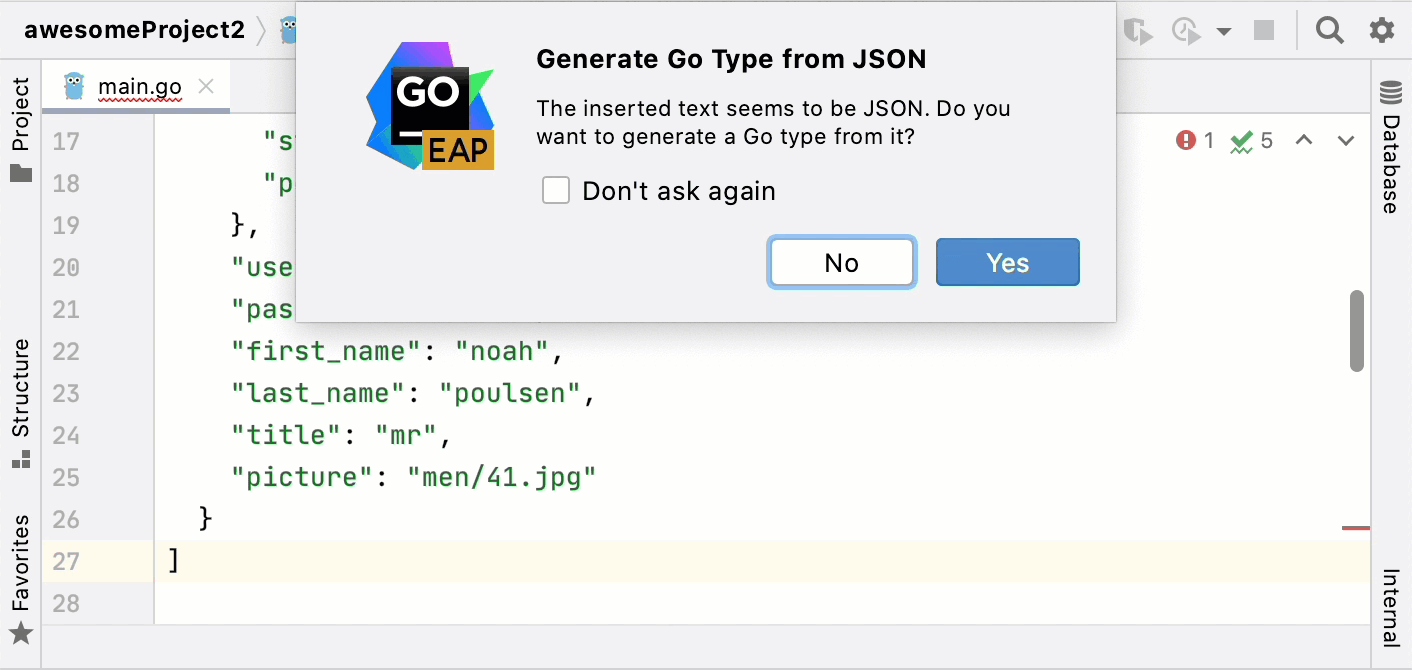
You can use the copy-and-paste approach or the Generate Go Type from JSON dialog.
Generate struct fields
Press Ctrl+Shift+A to invoke the Go to Action search.
Search for the Generate Go Type from JSON option and run it.
Paste or write your JSON in the text field.
Click Generate.
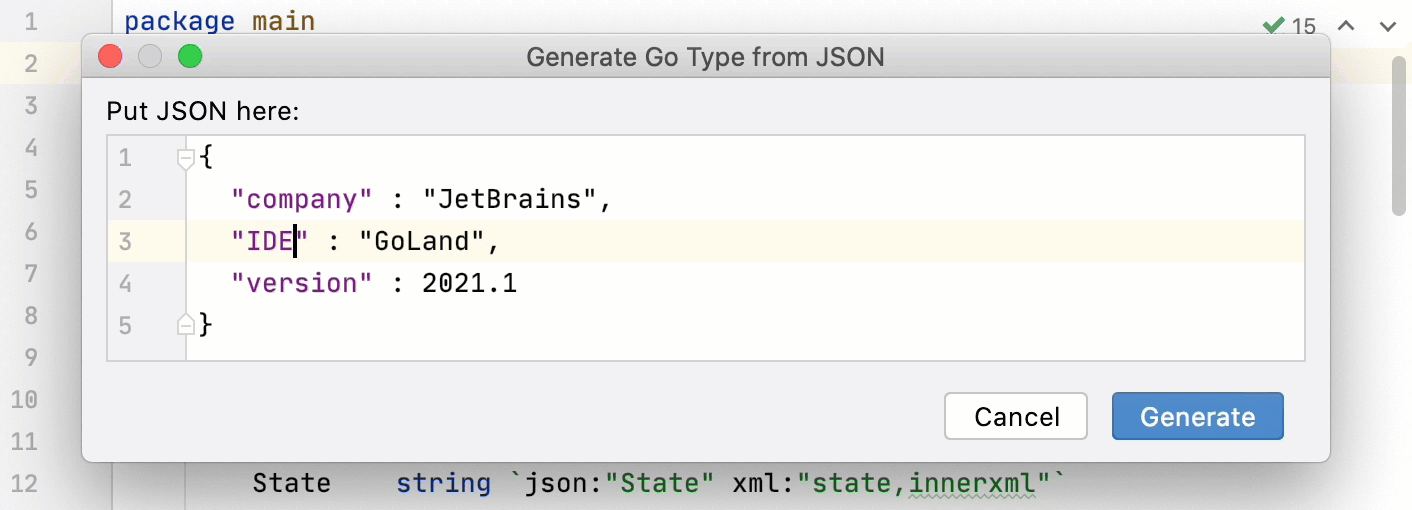 Gif
Gif
Intention actions
By using intention actions, you can add new tags, keys and modify the code style of tag keys.
Add new tags to a struct field
Click a struct field and press Alt+Enter.
Select Add key to tags.
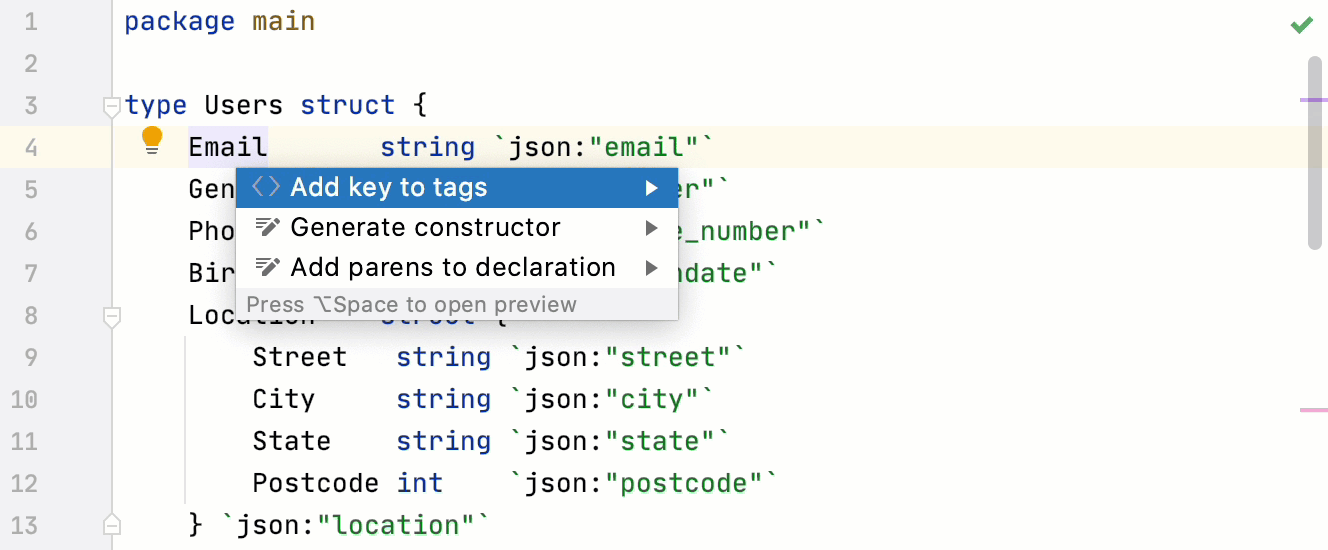 Gif
Gif
Modify keys in field tags
Click a struct field and press Alt+Enter.
Select Update key value in tags.
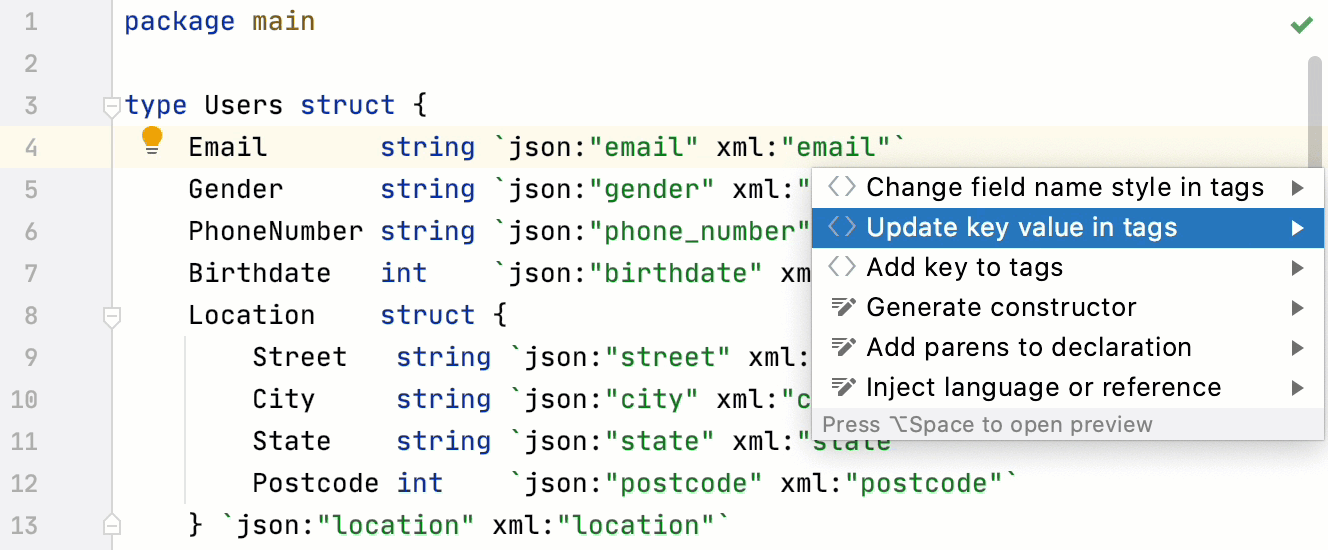 Gif
Gif
Change code style of tag keys
Click a key in tag and press Alt+Enter.
Select Change field name style in tags.
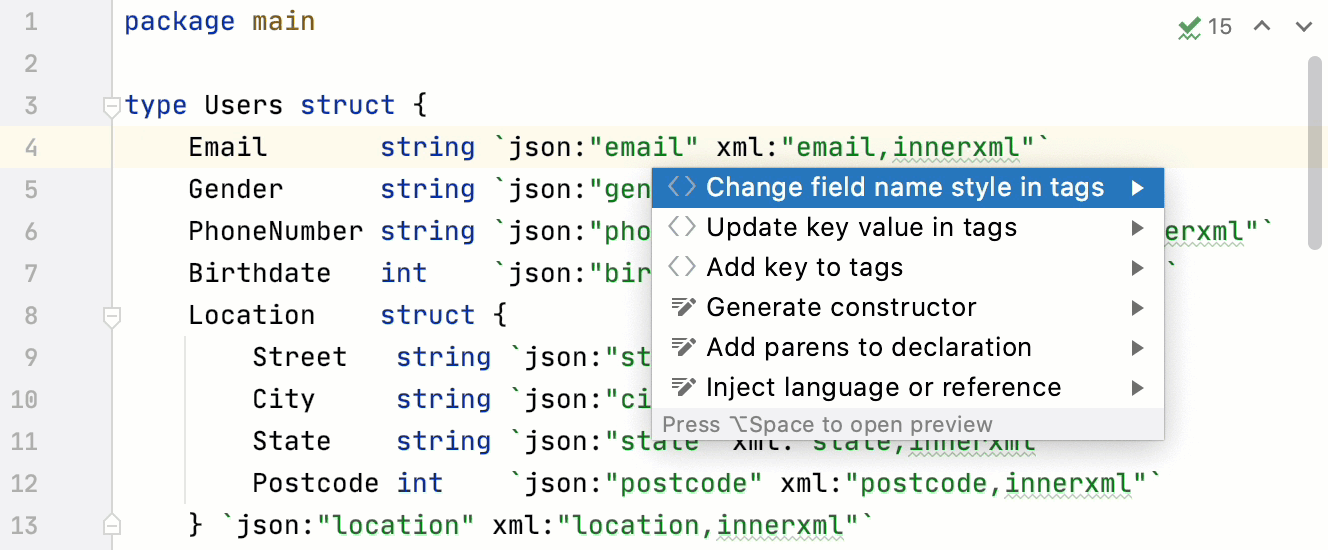 Gif
Gif
Code completion
When you modify tag keys, GoLand displays a list of the most popular values for these tags. For example, json suggests omitempty; xml has attr, cdata, chardata, innerxml, and others; asn1 has optional, explicit, generalized, and so on.
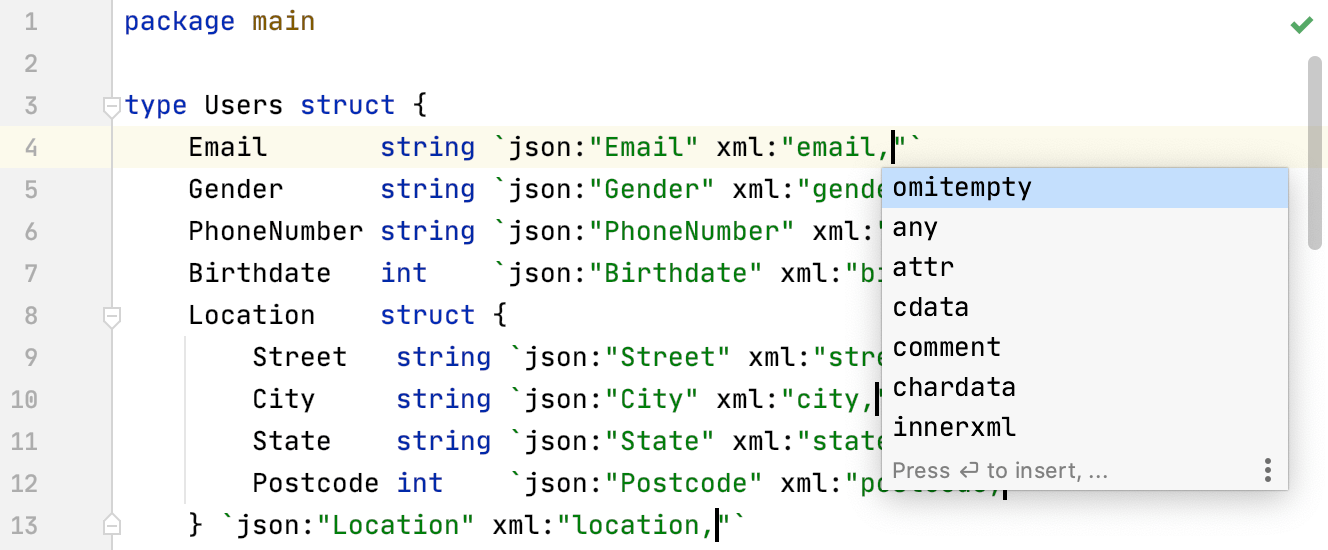
Generate fields for an empty struct
If you have an empty struct, you can generate all the necessary fields and tags from JSON. To do that, call the Generate Go Type from JSON dialog by using the Go to Action search and paste your JSON in the text field. Alternatively, you can navigate to Code | Generate and select Type from JSON in the popup window.
